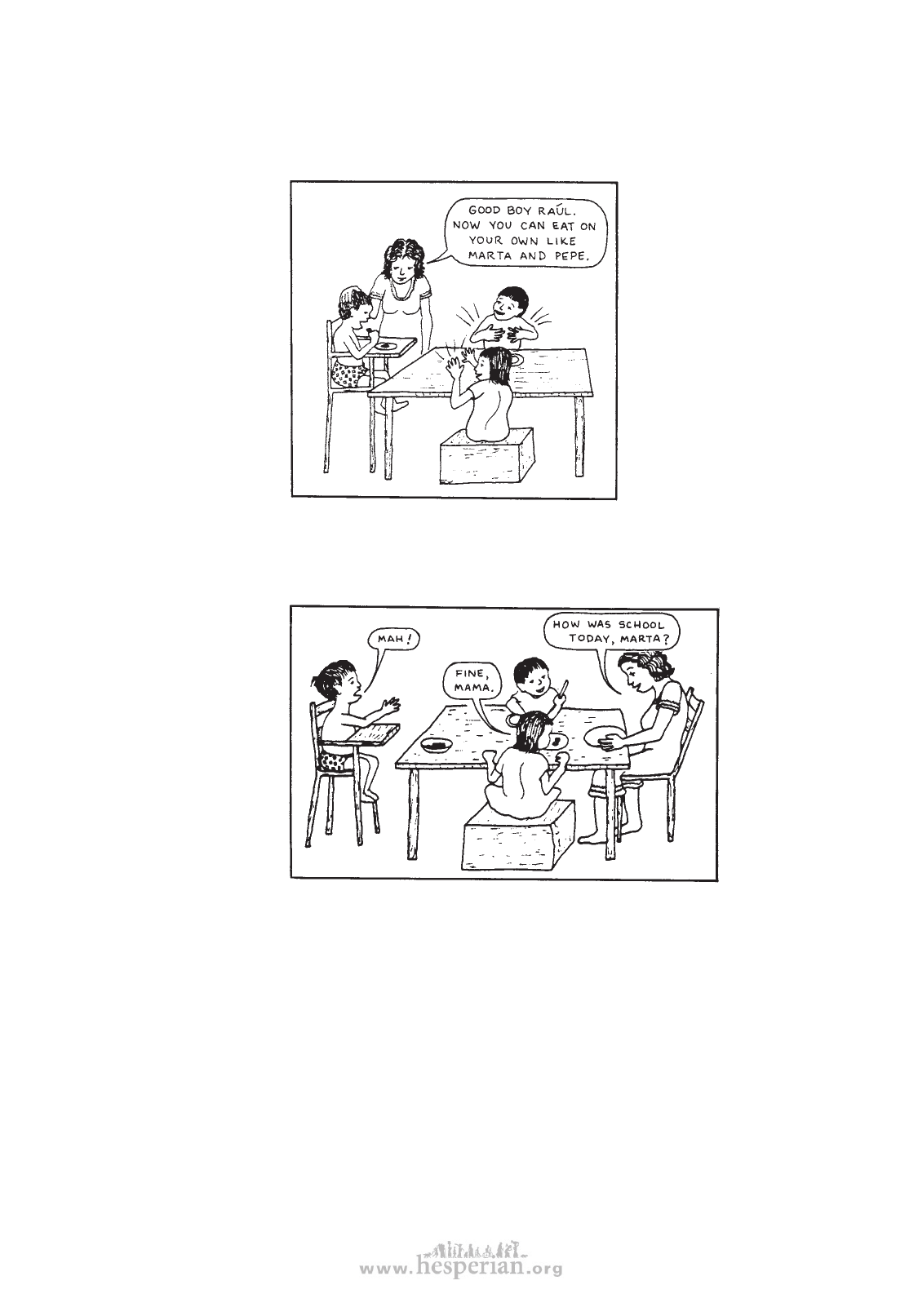
352 chapter 40
Always reward ‘good’ behavior and never reward ‘bad’ behavior. This is the key to the
behavioral approach.
For example, whenever Ra√∫l eats by himself, without throwing his food, the whole family
can applaud and praise him.
Ra√∫l finds that
good behavior
brings rewards
and attention.
But whenever he throws his food, the family ignores him, except perhaps to say “I’m sorry
you did that, Raúl,” or, “Once more and I’ll have to take your food away because I’m tired of
having to clean up the mess.” (Make this a result, not a punishment.) Always do what you
say you will do.
He quickly learns
that throwing his
food now brings
no reward.
ADDITIONAL GUIDELINES:
• Be consistent in how you respond to your child’s behavior. If you sometimes reward
good behavior and at other times you ignore it, or if you sometimes ignore bad behavior
and at other times either scold or do what the child demands, this is confusing. His
behavior is not likely to improve.
• WARNING: When using this approach, at first the child may actually behave worse.
When Raúl does not get his mother’s attention by throwing his food, he may try
throwing his bowl too. It is very important that his mother not give in to his demands,
but rather be consistent with her approach. Only if she is consistent will he learn that he
gets more of what he wants with ‘good’ behavior than with ‘bad’.
• Move towards the goal little by little, in small steps. If steps forward are small and
clearly defined, often the child will learn more easily, and a beginning period of worse
behavior can sometimes be avoided.
Disabled village Children